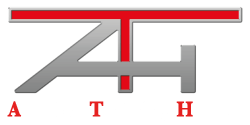A horse’s bite can be very painful for humans and understanding the root cause of this behavior is critical to its resolution.
Download the article in PDF and print it to read it wherever you want
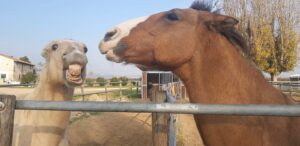
A horse can bite for several reasons, but in all cases, a lack of education and management of the animal is at the basis of this attitude. All equidae (horses, mules, donkeys) use the bit in communication. This gesture is a foundation of social relations, both as interactive communications, such as biting the neck or withers in grooming, and as aggressive communication, such as during a clash for the hierarchy ( photo 1 ). Stallions use the bit much more than females, sometimes to conquer a mare, but more often in fights for supremacy aimed at breeding. The skin of the horses is however much thicker and more durable than ours, so they are rarely fatal ( foto2). The same thing cannot be said when this attitude occurs towards the human being, for whom the consequences can be far worse. A bite can tear the skin, detach parts of muscle or flesh from the bones, and ultimately be extremely dangerous. Teaching a horse that the bit, while being part of its communication, should not be used towards the rider, is essential. Like everything related to education, it is easier to teach foals, while it is more complex when the horse is adult and the attitude is ingrained.

To correct the behavior there is the first need to understand where it originates from. Recall that the bite is a forward movement and always carries with it an idea of aggression. It is never defensive, as football could be. This difference is fundamental to understand how to behave in the correction, since, as already explained in a previous article on horse fears , when this prey is in a condition with no way out, it can choose to attack in order to open an escape. Therefore one of the first causes of the bite can be originated precisely by a fear from which the horse cannot escape and to which it is forced to react with an aggression, with the aim of clearing a road and getting away from the situation that frightens it (photo3 ). In this case the responsibility for this aggressive reaction lies entirely with the rider who has not been able to read the context and has brought the horse to the limit of endurance of the instinctive part, until it leads to the bit. The repetition of this behavior, if it effectively leads the horse to get rid of the problem, will cause the animal to attack more and more quickly, knowing that that reaction will free it from the uncomfortable situation, thus progressively eliminating the flight phase. The horse could get to react aggressively to any event not suited to it, making it dangerous.
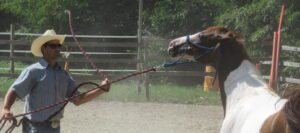
Un’altra situazione molto comune è il cavallo che morde per maleducazione. I puledri in particolare, esaminano e mordicchiano tutto: è il loro modo di conoscere il mondo (foto4). Per i cavalieri inesperti questo atteggiamento è buffo e carino. Quando il puledro tocca con le labbra la nostra pelle, sembra cercare affetto e contatto. In realtà non è così. Dalle labbra in poco tempo si passa ai morsetti e dai morsetti ai morsi veri e propri. Anche in questo caso la responsabilità è del cavaliere che ha in dovere l’educazione del puledro. Finchè sono giovani è abbastanza semplice far capire loro quali sono le regole di convivenza con l’umano. Quando poi sono adulti, è tutta un’altra cosa ed un comportamento radicato risulta complesso da rimuovere.

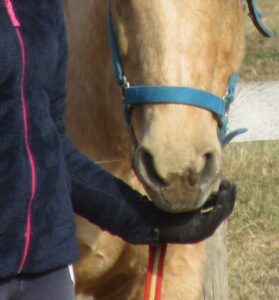
Altra origine diffusa del morso è l’abitudine di portare del cibo direttamente alla bocca del cavallo con le mani (foto5). Questo atteggiamento è sconosciuto in natura, in quanto nessun simile gli porterà mai del cibo e glielo consegnerà direttamente alla bocca. È un comportamento invece tipico dei predatori. La ripetizione di questa cattiva abitudine porterà l’animale a cercare sempre più insistentemente la mano alla ricerca di delizie, arrivando a morderla per vedere se c’è del cibo su di essa. Anche in questo caso la colpa risiede nella gestione quotidiana del cavallo.
Più complessa è la situazione degli stalloni, per i quali mordere è parte istintiva del loro comportamento. Se per femmine e castroni è radicato l’istinto di fuga, mentre l’aggressione avviene solo in caso di sensazione di trappola, per lo stallone non è raro che il suo istinto gli dica di fare l’esatto contrario: aggredire prima e fuggire poi. Per questo l’addestramento e la gestione degli stalloni richiede esperienza da parte del cavaliere e anche un comportamento deciso e risoluto (foto6).

Più raramente il cavallo morde per sfuggire al dolore, ma può succedere anche questa situazione. Nel caso in cui il cavaliere non fosse in grado di leggere i segnali di malessere del proprio animale, questo potrebbe decidere di farglielo capire anche tramite l’aggressione, cercando di comunicargli che ha del dolore e che quell’azione gli provoca sofferenza. Un esempio si può avere quando la sella è inadatta per la schiena del cavallo e ha provocato dei dolori. Nel momento in cui andiamo a metterla o a stringerla, lui si potrebbe girare per mordere, segnalandoci che il fatto di mettergliela provoca del dolore. Attenzione però a non scambiare questo morso per una mancanza di voglia di essere montato, situazione invece generata dalla assenza di rispetto (foto7).
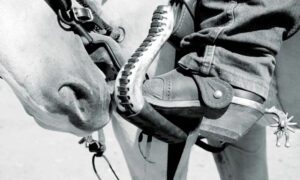
Le casistiche sono quindi davvero molte e comprendere l’origine del comportamento scorretto è fondamentale. In diversi casi un cambio nella gestione quotidiana del cavallo può risolvere il problema in poco tempo, come nel caso in cui si porta il cibo con le mani alla bocca del cavallo. In altri casi la comprensione dei malesseri o dei dolori del cavallo e quindi una conseguente visita veterinaria può estinguere l’atteggiamento aggressivo. Negli altri casi c’è la necessità di una rieducazione o riaddestramento del cavallo. Se il comportamento è agli inizi, poche decise correzioni possono limitare lo sviluppo del morso, estinguendolo sul nascere. In tal caso ricordiamo che essendo il morso una reazione aggressiva, è quindi un movimento in avanti, e va corretto richiedendo un movimento indietro. Perciò ad ogni tentativo da parte del cavallo, lo correggeremo mandandolo indietro energicamente, usando la capezza o lo spazio personale (foto8). Non dobbiamo cercare lo scontro fisico, che ci porterebbe ad un’inevitabile sconfitta, per inferiorità di forze e di massa. Un errore diffuso è quello di cercare di colpire il cavallo mordace sul naso o sulla faccia. Si innesca così una sfida con lui, dove si cerca di vedere se sarà più veloce lui a mordere o noi a colpirlo. L’azione correttiva deve essere sempre in una zona diversa dalla faccia del cavallo. Effettuata quindi l’esatta correzione, mettiamo subito in lavoro il cavallo, associando anche la fatica al suo comportamento scorretto. Con questi accorgimenti potremo limitare e, successivamente, eliminare il morso dalla gamma di possibili reazioni del cavallo, ma solo quando esso è alle origini. Se il comportamento è radicato, serve l’aiuto di un professionista che studi e comprenda gli atteggiamenti del cavallo e imposti un lavoro risolutivo, che, con tutta probabilità, richiederà non poco tempo.
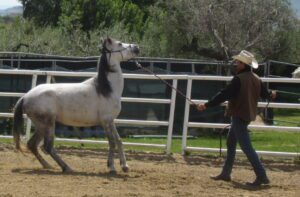
We conclude by remembering that the best way to avoid incorrect behavior on the part of our horse is to prevent them before they become an integral part of its communication. Now that we understand what are the situations that can give rise to the vice of biting, let’s try to behave accordingly, anticipating the onset of this unpleasant behavior.

